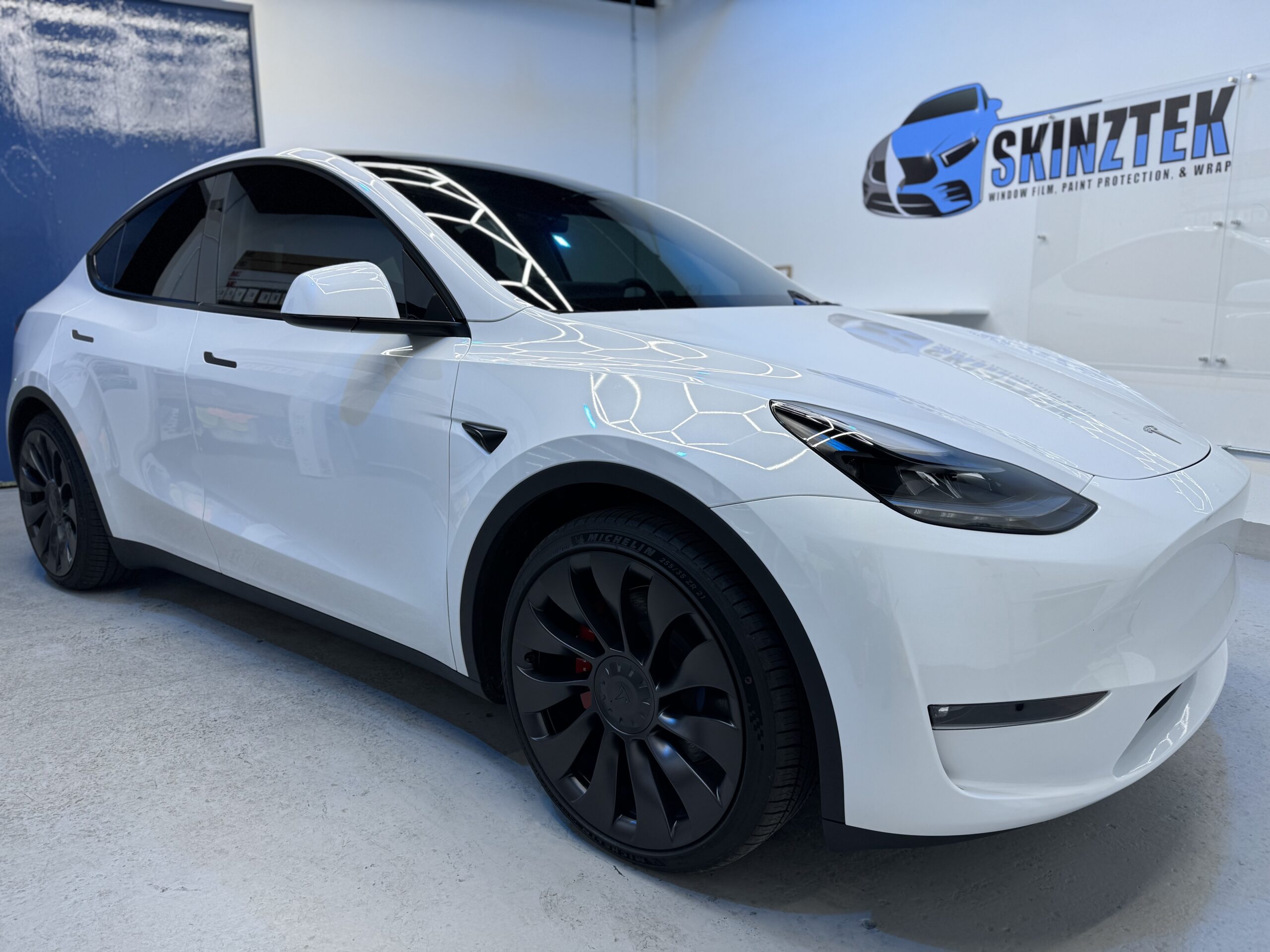Electric vehicles (EVs) are more than just cars—they’re a blend of cutting-edge technology and sleek, modern design. But while EVs boast advanced engineering under the hood, their exteriors face the same environmental challenges as any other car.
That’s where ceramic coating comes in. It’s not just about the shine; ceramic coating offers EV owners unique benefits, from protecting delicate paint finishes to improving efficiency with reduced surface drag. Here’s everything you need to know about why ceramic coating is a must-have for your electric ride.

1. Protecting EV-Specific Paint Finishes
EV manufacturers often use unique, eco-friendly paint formulations that are more prone to scratches, chips, and fading compared to traditional automotive paints. This is especially true for matte or specialty finishes, which are becoming increasingly popular in the EV world.
Ceramic coating adds a strong, transparent layer over the paint, providing:
- Scratch resistance: Guards against minor scratches and swirl marks from washing or daily use.
- UV protection: Prevents fading and discoloration from prolonged sun exposure.
- Stain prevention: Repels contaminants like bird droppings, tree sap, and industrial fallout that can permanently damage sensitive paint finishes.
Whether you drive a Tesla, Rivian, or another EV brand, ceramic coating helps maintain that showroom shine for years to come.
2. Boosting Efficiency with Reduced Surface Drag
Aerodynamics play a crucial role in EV performance and battery efficiency. Even minor surface irregularities—like dirt, debris, or paint imperfections—can increase drag and reduce range.
The ultra-smooth surface created by ceramic coating helps minimize air resistance by reducing microscopic irregularities on the car’s exterior. This results in:
- Smoother airflow: Less drag means better energy efficiency, helping you get more miles per charge.
- Cleaner surfaces for longer: Dirt and grime don’t stick as easily, ensuring your car remains aerodynamic without constant washing.
While the efficiency gains might seem small, every bit of energy savings adds up—especially for EV owners focused on maximizing range.
3. Simplifying Maintenance with Hydrophobic Protection
EV owners often appreciate efficiency—not just on the road, but in daily maintenance routines as well. Ceramic coating’s hydrophobic properties make it easier to keep your car clean without frequent washes.
Here’s why:
- Water, mud, and road grime bead up and roll off effortlessly.
- Less need for aggressive scrubbing, which reduces the risk of scratches.
- Rain and snow wash away surface dirt naturally, leaving your EV looking cleaner between washes.
For Chicago EV owners who deal with everything from summer rainstorms to winter salt, this simplified maintenance routine is a game-changer.
4. Preserving High-Tech Sensors and Cameras
Advanced driver-assistance systems (ADAS) rely on cameras, sensors, and radar units often integrated into the exterior of EVs. These components are crucial for functions like autopilot, lane-keeping assistance, and collision detection.
Ceramic coating protects these sensitive surfaces by:
- Repelling water and preventing water spots from obscuring sensor lenses.
- Reducing the buildup of dirt and debris, which can interfere with system performance.
- Protecting against UV damage that can degrade plastic sensor housings over time.
While ceramic coating won’t interfere with sensor performance, it helps maintain clear, reliable operation in all weather conditions.
5. Protecting EV Interiors from UV Damage
Electric vehicles often feature expansive glass roofs and large digital displays, making interior sun damage a real concern. Ceramic coating, paired with window tint, can reduce UV exposure inside the cabin, preserving:
- Digital dashboards and infotainment screens.
- Leather or vegan leather upholstery.
- Plastic and trim components that can crack or discolor from prolonged sun exposure.
This UV-blocking capability not only keeps your EV’s interior looking sharp but also helps regulate cabin temperature, reducing battery drain from constant air conditioning use.
6. Eco-Friendly Protection for Eco-Friendly Cars
For many EV owners, sustainability is a top priority. Ceramic coating aligns with this mindset by providing long-lasting protection without the need for harsh, chemical-based cleaners or frequent reapplications.
- Fewer car washes mean less water consumption.
- The coating lasts for years, reducing the use of waxes and sealants.
- Many ceramic coatings are formulated with environmentally safe materials.
When you invest in ceramic coating, you’re not just protecting your car—you’re contributing to a more sustainable maintenance routine.
FAQs About Ceramic Coating for EVs
Is ceramic coating safe for electric vehicles?
Absolutely. Ceramic coating bonds to the paint without affecting electrical components, sensors, or charging ports.
Does ceramic coating improve EV efficiency?
Yes, in a subtle way. The smoother surface reduces drag, helping to slightly improve range by optimizing aerodynamics.
How long does ceramic coating last on an EV?
Professional-grade ceramic coatings can last 3 to 7 years with proper care, depending on driving conditions and maintenance habits.
Why SkinzTek Is the Right Choice for Your EV
At SkinzTek, we understand the unique needs of electric vehicles. Our team uses premium ceramic coatings designed to protect sensitive finishes, optimize aerodynamics, and simplify maintenance—so you can spend more time enjoying your EV and less time worrying about its upkeep.
Contact us today to schedule your ceramic coating and give your high-tech ride the protection it deserves.
